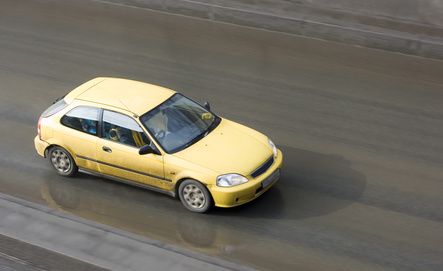
"Rocker arm" refers to a lever used to push down a valve located in an internal combustion engine. A roller rocker arm uses special components to produce a rolling motion.
A rocker arm lever reciprocates in order to transfer radial movement from the cam into linear movement, enabling the poppet valve to open. "Cam" refers to linkage used to convert one form of motion, such as rotary, into another form, such as linear. Poppet valves comprise a hole and valve stem. When the cam lifts the rocker arm’s outside end, the inside of the arm lowers, exerting pressure on the poppet valve stem and opening the valve.
Roller rockers perform the same function as traditional rocker arms but use a bearing system to create a rolling motion, as opposed to using metal sliding on metal to produce reciprocation. A bearing is a device enabling constrained rotating or linear motion between two or more components.
The roller rocker assembly produces motion via a cam. The end of the roller rocker, called the roller-tip-rocker, consists of a wheel that rolls via roller bearings. Roller bearings attaching the rocker assembly produce a rolling motion for the main pivot of the roller rocker arm as well.